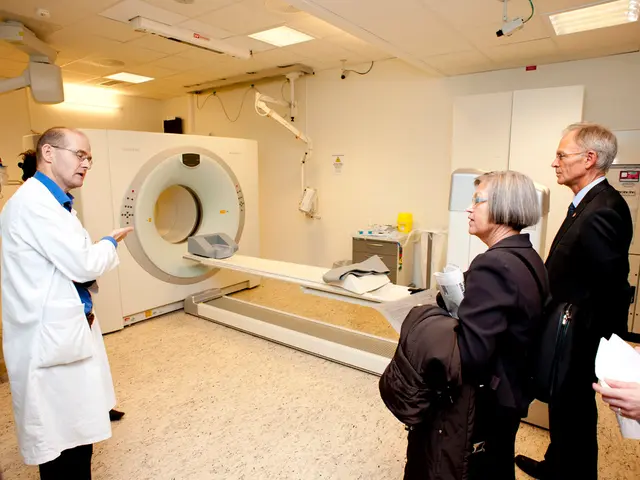Uncovering the Potential of "Artifacts" in Establishing a Family Business's Historical Footprint
**Family-Owned Businesses Use Artifacts to Transmit Legacy and Build Emotional Connections**
Family-owned businesses are leveraging artifacts — physical objects, stories, rituals, and cultural elements — as powerful tools to transmit their legacy across generations and foster emotional connections with stakeholders. These artifacts serve as tangible links to the family’s history, values, and traditions, enabling continuity and identity preservation while strengthening stakeholder trust and loyalty.
According to Matt Allen, a clinical professor at Kellogg and the executive director of the Ward Center for Family Enterprises, the process of creating a legacy works best when it’s done with intention, with both generations actively thinking about what they want their legacy to be.
One key way family businesses use artifacts is through storytelling and narratives. Sharing stories about family history, ancestors, significant founding events, and the meaning behind artifacts helps younger generations and stakeholders emotionally connect with the business heritage. Storytelling contextualizes artifacts, making legacy feel alive and relevant.
Family rituals, ceremonies, or repeated traditional practices involving family heirlooms or symbolic objects reinforce shared values and cultural identity, making the legacy experiential and memorable for both family members and external stakeholders.
Physical artifacts and heritage spaces, such as displaying family photographs, historical documents, awards, products, or memorabilia within business premises or family museums, embody the heritage. These curated spaces communicate the family’s story and legacy coherently to employees, clients, and partners.
Brand storytelling and marketing also play a crucial role in fostering customer loyalty and trust. Using the family’s history and legacy in branding and storytelling aligns the company’s identity with its values and tradition while engaging modern consumers.
Intergenerational education and mentorship are essential for ensuring continuity. Elders act as custodians of legacy through mentoring and education, sharing knowledge tied to artifacts, family ethos, and business philosophy with the next generation.
Balancing tradition and innovation is another key aspect. Family businesses often reimagine traditional practices or artifacts to remain commercially relevant, thus preserving legacy while adapting to contemporary markets, which resonates emotionally with stakeholders who value authenticity and evolution.
Matt Allen advises family businesses to choose artifacts that are specific enough to speak to family history and values, but general enough to provide a compass for employees as the firm evolves. He also suggests avoiding artifacts that are so specific they hold the next generation back or become uninspiring.
An example of a physical artifact tied to an emotional artifact of resilience is a flood-damaged wall panel retained by a manufacturing company in Latin America after a devastating flood. The flood-damaged wall panel serves as a reminder of the company’s resilience and is not about how to rebuild a factory after a flood.
In the food-manufacturing industry, the fourth and fifth generations worked together to evolve the company’s strategy to include sustainable business practices. The emphasis on sustainability became a new emotional artifact bridging multiple generations in the family-owned business.
Older generations tend to value identity, moral obligation, emotional attachment, and a desire to leave something behind for their heirs, while younger generations recognize these priorities but seek their own legacies. Matt Allen advises against using artifacts that are so specific they hold the next generation back or become uninspiring.
An example of an artifact is a cherished family gathering place, which is physical, social, and emotional. An example of an artifact that illustrates and inspires is a story about a housekeeper returning a valuable wedding ring to a guest in a family hotel business.
In summary, family-owned businesses utilize artifacts—through storytelling, rituals, curated heritage, brand narratives, and education—to preserve and communicate their legacy, fostering deep emotional bonds across generations and with broader stakeholders. This emotional engagement is crucial for long-term business resilience and harmonious family-business relationships.
Businesses may find educational resources beneficial for instilling valuable financial and self-development knowledge, reinforcing the inclusive nature of their legacy and engaging younger generations. Educational resources could be curated collections of books, seminars, or online courses on business management, ethical leadership, and industry-specific trends that align with the family's values and traditions.
When the next generation takes on leadership roles, they can continue the legacy by maintaining elements of the family's business and artifact collection while innovatively adapting them to address contemporary challenges in the finance and business sectors. This balances the family's heritage with modern industry requirements, ensuring the business continues to thrive and maintain its emotional connections with stakeholders.




